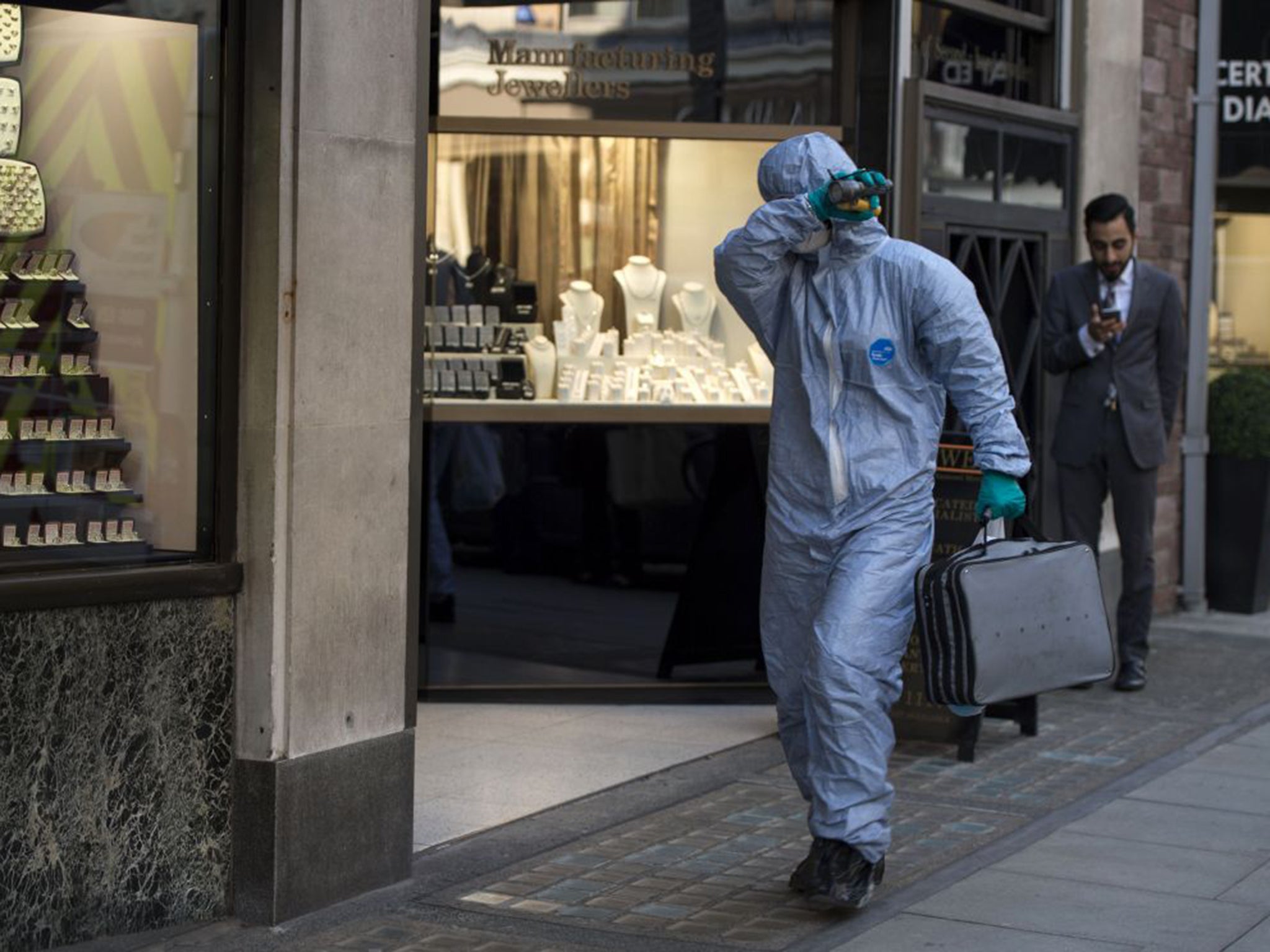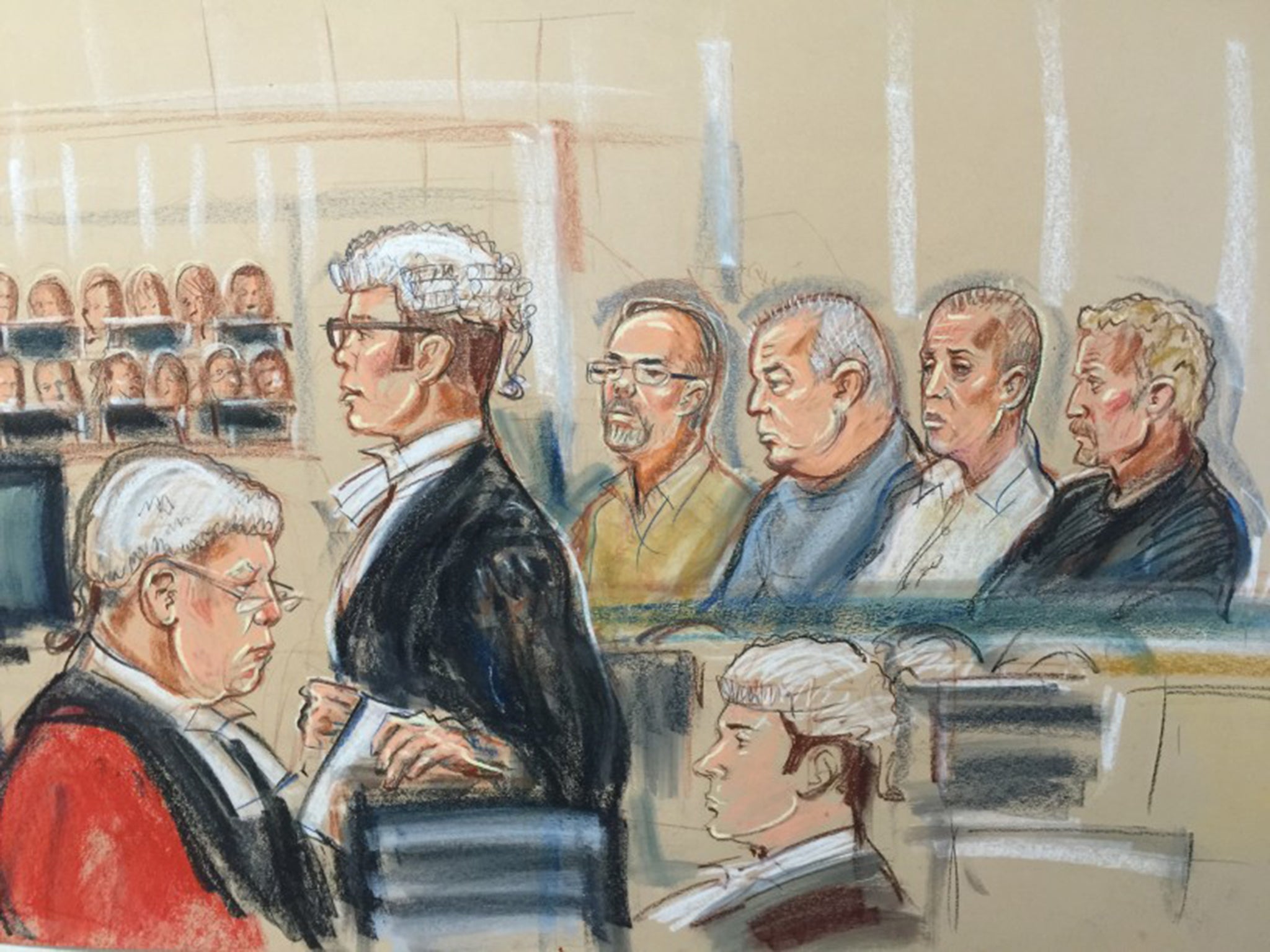Hatton Garden theft: How the nation's largest heist was done
The gang planned the operation for years before escaping with £14m and leaving no forensic trace

How they did it
For months, a jeweller working next door to what would become the scene of England’s largest ever burglary had been feeling uneasy. Lionel Wiffen was later to tell police that he had a nagging sense of being watched. His instincts, the prosecution claimed yesterday, were right.
The raid on the basement vault holding hundreds of safety deposit boxes had been planned for years, complete with surveillance operations, tampering with key systems and preparations to launder money, a trial heard yesterday.
The plotters spent hours together during regular Friday meetings at the Castle Pub in Islington, north London, and Scotti’s café within close distance of the safety deposit centre, the court heard. By mid-March, John Collins – one of the ringleaders who has pleaded guilty – had been to the area of the safety deposit centre five times.

The preparations
In August 2012 one of the plotters researched the internet for heavy-duty drills, said prosecutor Philip Evans. He said they also plotted how to dispose of the proceeds. Terry Perkins, one of the alleged ringleaders, visited London City Metals, which the prosecution suggested would be the destination for some of the loot.
The prosecution detailed increasing activity as the date for the job neared. Around three days before the raid, a woman noticed that the lifts in 88-90 Hatton Gardens were taking an unusually long time to arrive. When it finally arrived, the woman said she saw a man with white hair, wearing blue overalls, surrounded by tools. He apologised as there was not enough room for her to get in. The man matched the description of Perkins, the court heard.
The job
The first man in through the front doors of 88-90 Hatton Garden is known only as “Basil” and has never been identified, the court heard. The group waited until the last member of staff, Mr Wiffen the jeweller, had left at about 9.20pm and “Basil”, the prosecution allege, opened a fire door to let four other men in – Jones, Perkins, Carl Wood and Brian Reader.
The jury was shown CCTV footage of a white van pulling up outside the door and members of the gang taking wheelie bins, steel joists, tools and other equipment through the fire door.
On the inside
The few surviving CCTV pictures from inside the building showed the men heading towards the vault, the prosecution maintains.
The gang got into the vault through the lift shaft. The lift had been stuck on the second floor and the doors on the ground floor were tampered with to ensure they stayed open. From there, it was a short drop into the basement from the ground floor.
In the basement, the aerial of the burglar alarm was broken off to reduce its range. The electricity supply controlling heavy iron gates was cut, allowing them to be opened. When they were, it allowed the weakened burglar alarm to send a message to the company monitoring it, the jury was told.
One of the security guards, Kevin Stockwell, was told to head to the scene and he arrived after midnight. He reported back that the main door and the fire door appeared secure and he returned home.
Next, a second iron gate and walls were drilled through, gaining access to the main vault. But the raiders hit difficulties with a black heavy cabinet housing the safe deposit boxes. They had brought a 10-tonne hydraulic ram to move the cabinet but it appeared there was a problem with the equipment. They had to leave before returning the following day.